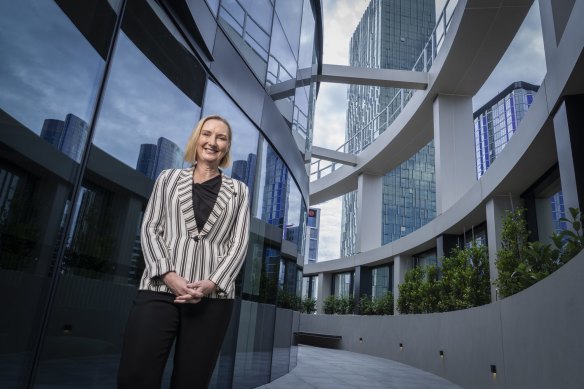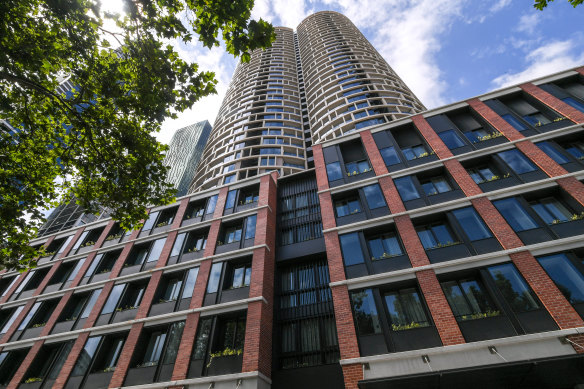Fewer first home buyers and wet weather hamper Mirvac’s residential sales
Property giant Mirvac is putting off redeveloping office towers as work from home trends become more entrenched and has reported a slowdown in residential sales from wet weather, labour shortages and buyer uncertainty about rising interest rates.
The $9.47 billion ASX-listed developer, landlord and fund manager said fewer housing project launches and less interest from first home buyers has impacted residential settlements. They fell to 807 in the six months to December, although the developer still expects to achieve its full-year target of 2500 by June.

“While ongoing supply chain constraints, labour shortages, wet weather, inflationary pressures, and higher interest rates continued to impact our business, our integrated and diverse business model, the quality of our portfolio, our strong balance sheet, and disciplined capital management have positioned us well to navigate through the cycle,” outgoing chief executive Susan Lloyd-Hurwitz said.
Despite the economic challenges, leasing and occupancy across the landlord’s large property portfolio has improved, retail sales in its shopping centres are at pre-COVID-19 levels, and cash collection from tenants has stabilised around 98 per cent.
“We continue to focus our active capital on our industrial and build-to-rent (BTR) pipelines, which are supported by strong fundamentals, along with select mixed use and office projects, while deferring a number of office developments in the short-to-medium term,” she said.
Lloyd-Hurwitz joined Mirvac a decade ago and in that time has delivered $6 billion of commercial assets, $14.8 billion of residential dwellings and grown the third-party capital to around $18 billion. She will be replaced by Mirvac’s Campbell Hanan on March 1.
We continue to focus our active capital on our industrial and BTR pipelines, which are supported by strong fundamentals, along with select mixed use and office projects, while deferring a number of office developments in the short-to-medium term
Mirvac CEO Susan Lloyd-Hurwitz
Mirvac is Australia’s largest apartment and housing estate developer. It also owns and manages offices, shopping malls, warehouses and BTR apartments. The company’s projects include the Nine site at Willoughby in Sydney and Voyager at Yarra’s Edge in Melbourne.
The company reported a first-half statutory profit of $215 million, down 62 per cent on the previous corresponding period’s $565 million due to asset sales and lower investment property revaluations. Net profit was up 3 per cent to $305 million.
Funds under management increased to $18 billion, a rise of 75 per cent, boosted by the integration of the $7.9 billion AMP Wholesale Office Fund, now called the Mirvac Wholesale Office Fund.

Lloyd-Hurwitz said the developer was keen to progress with work on its 55 Pitt Street Sydney office and its mixed-use Waterloo project, but other projects will be delayed.
It will defer plans to redevelop 90 Collins and 383 La Trobe Street in Melbourne and 75 George Street in Parramatta, instead leasing them as they are. Development approvals will remain in place “ready to go on with in different market conditions,” she said.
Sequoia Asset Management’s Winston Sammut said Mirvac’s result was largely as expected, however, the quality of the result was somewhat diminished by $58 million in one-off commercial profits offsetting lower contributions from Mirvac’s residential business.
“Going forward, the prospect is for mortgage rates to continue to rise and negatively impact borrowers. This is likely to dampen demand for Mirvac product notwithstanding the superior quality of their offering,” Sammut said.
He said Mirvac’s successful office leasing programme has “no doubt” been assisted by high incentive levels (discounts or rent-free periods offered by landlords to attract tenants), at close to 30 per cent.
Mirvac expects to boost growth in its industrial portfolio where it has started construction on the Aspect Industrial Estate at Kemps Creek and the Switchyard Industrial Estate in Auburn, Sydney. In Melbourne, its BTR project at LIV Monro is now 32 per cent leased. It also has a $740 million pipeline of assets under construction.
Mirvac said sales rates at its shopping malls were above pre-COVID levels with like-for-like net operating income growth of 1.6 per cent and average rent reviews of 4 per cent.
The company reported an interim dividend of 5.2¢ per unit payable on February 28.
Most Viewed in Business
Source: Thanks smh.com